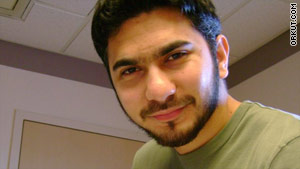
GRAND ISLE, LA. -- In the Louisiana marsh, oil-coated pelicans flap their wings in a futile attempt to dry them. A shorebird repeatedly dunks its face in a puddle, unable to wash off. Lines of dead jellyfish float in the gulf, traces of oil visible in their clear "bells."
These scenes, scientists say, are confirmation of what they had feared for a month. Now that oil from the Gulf of Mexico's vast spill has come ashore -- in some places, as thick as soft fudge -- it is causing serious damage in one of the country's great natural nurseries.
In nature, oil is a versatile killer. It smothers the tiny animals that make up a coral reef. It suffocates blades of marsh grass, cutting them off from air and sunlight. It clumps up a bird's feathers, leaving it unable to fly. Then, trying to remove the oil, birds swallow it.
For now, scientists are seeing the worst effects only in one corner of the Louisiana coast.
But they're concerned about what they're not seeing -- and worried that the impact on animals and plants will only get worse.
"Now that the stuff is really sort of coming ashore, it really is living up to its potential. It's certainly breached the sort of outer defense system of Louisiana," said James H. Cowan Jr., a professor at Louisiana State University. "It's the very worst-case scenario, for things like birds and mammals."
On Wednesday, the oil company BP has plans to try a "top kill" of its leaking well, 5,000 feet below the surface and more than 40 miles off Louisiana. The company will shoot high-pressure mud into the well, hoping the pressure of mud coming in will eventually overcome the pressure of oil shooting out.
But, even if that works, it will do nothing to rein in the oil that has already escaped.
That oil began washing up in Louisiana last week, about a month after the Deepwater Horizon drilling rig exploded and sank. It first appeared in the remote marshes near the Mississippi's mouth. Then, this week, it began washing into the vast complex of islands, lakes and bayous just west of the river.
These scenes, scientists say, are confirmation of what they had feared for a month. Now that oil from the Gulf of Mexico's vast spill has come ashore -- in some places, as thick as soft fudge -- it is causing serious damage in one of the country's great natural nurseries.
In nature, oil is a versatile killer. It smothers the tiny animals that make up a coral reef. It suffocates blades of marsh grass, cutting them off from air and sunlight. It clumps up a bird's feathers, leaving it unable to fly. Then, trying to remove the oil, birds swallow it.
For now, scientists are seeing the worst effects only in one corner of the Louisiana coast.
But they're concerned about what they're not seeing -- and worried that the impact on animals and plants will only get worse.
"Now that the stuff is really sort of coming ashore, it really is living up to its potential. It's certainly breached the sort of outer defense system of Louisiana," said James H. Cowan Jr., a professor at Louisiana State University. "It's the very worst-case scenario, for things like birds and mammals."
On Wednesday, the oil company BP has plans to try a "top kill" of its leaking well, 5,000 feet below the surface and more than 40 miles off Louisiana. The company will shoot high-pressure mud into the well, hoping the pressure of mud coming in will eventually overcome the pressure of oil shooting out.
But, even if that works, it will do nothing to rein in the oil that has already escaped.
That oil began washing up in Louisiana last week, about a month after the Deepwater Horizon drilling rig exploded and sank. It first appeared in the remote marshes near the Mississippi's mouth. Then, this week, it began washing into the vast complex of islands, lakes and bayous just west of the river.















